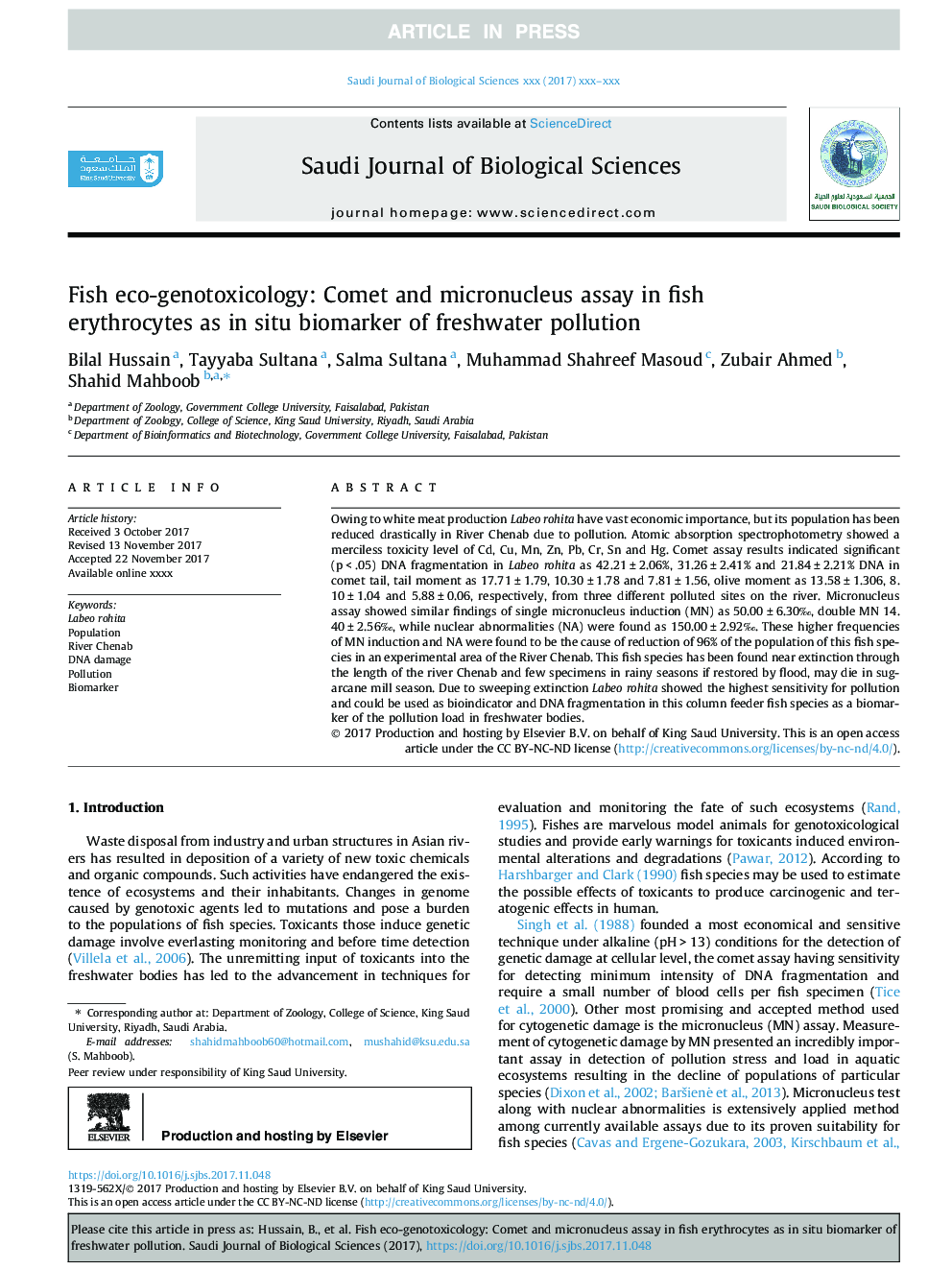| کد مقاله | کد نشریه | سال انتشار | مقاله انگلیسی | نسخه تمام متن |
|---|---|---|---|---|
| 8849938 | 1618659 | 2018 | 6 صفحه PDF | دانلود رایگان |
عنوان انگلیسی مقاله ISI
Fish eco-genotoxicology: Comet and micronucleus assay in fish erythrocytes as in situ biomarker of freshwater pollution
ترجمه فارسی عنوان
ماهی زیست شناسی زیست شناسی زیست شناسی: آزمایش کمیته و میکرونوکلئوس در اریتروسیت های ماهی به عنوان زیست سنجی در محیط زیست آلودگی آب شیرین
دانلود مقاله + سفارش ترجمه
دانلود مقاله ISI انگلیسی
رایگان برای ایرانیان
کلمات کلیدی
موضوعات مرتبط
علوم زیستی و بیوفناوری
علوم محیط زیست
بوم شناسی
چکیده انگلیسی
Owing to white meat production Labeo rohita have vast economic importance, but its population has been reduced drastically in River Chenab due to pollution. Atomic absorption spectrophotometry showed a merciless toxicity level of Cd, Cu, Mn, Zn, Pb, Cr, Sn and Hg. Comet assay results indicated significant (pâ¯<â¯.05) DNA fragmentation in Labeo rohita as 42.21â¯Â±â¯2.06%, 31.26â¯Â±â¯2.41% and 21.84â¯Â±â¯2.21% DNA in comet tail, tail moment as 17.71â¯Â±â¯1.79, 10.30â¯Â±â¯1.78 and 7.81â¯Â±â¯1.56, olive moment as 13.58â¯Â±â¯1.306, 8.10â¯Â±â¯1.04 and 5.88â¯Â±â¯0.06, respectively, from three different polluted sites on the river. Micronucleus assay showed similar findings of single micronucleus induction (MN) as 50.00â¯Â±â¯6.30â°, double MN 14.40â¯Â±â¯2.56â°, while nuclear abnormalities (NA) were found as 150.00â¯Â±â¯2.92â°. These higher frequencies of MN induction and NA were found to be the cause of reduction of 96% of the population of this fish species in an experimental area of the River Chenab. This fish species has been found near extinction through the length of the river Chenab and few specimens in rainy seasons if restored by flood, may die in sugarcane mill season. Due to sweeping extinction Labeo rohita showed the highest sensitivity for pollution and could be used as bioindicator and DNA fragmentation in this column feeder fish species as a biomarker of the pollution load in freshwater bodies.
ناشر
Database: Elsevier - ScienceDirect (ساینس دایرکت)
Journal: Saudi Journal of Biological Sciences - Volume 25, Issue 2, February 2018, Pages 393-398
Journal: Saudi Journal of Biological Sciences - Volume 25, Issue 2, February 2018, Pages 393-398
نویسندگان
Bilal Hussain, Tayyaba Sultana, Salma Sultana, Muhammad Shahreef Masoud, Zubair Ahmed, Shahid Mahboob,
